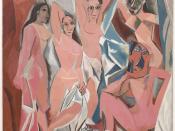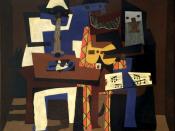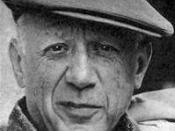Pablo Picasso
Pablo Picasso was a Spanish painter and sculptor, generally considered the greatest artist of the 20th century. He was unique as an inventor of forms, as an innovator of styles and techniques, as a master of various media, and as one of the most prolific artists in history. He created more than 20,000 works of art. Born in Málaga on October 25, 1881, Picasso was the son of José Ruiz Blasco, an art teacher, and MarÃÂa Picasso y Lopez. Until 1898 he always used his father's name, Ruiz, and his mother's maiden name, Picasso, to sign his pictures. After about 1901 he dropped "Ruiz" and used his mother's maiden name to sign his pictures. Picasso's genius manifested itself early; at the age of 10 he made his first paintings, and at 15 he performed brilliantly on the entrance examinations to Barcelona's School of Fine Arts. His large academic canvas Science and Charity (1897, Picasso Museum, Barcelona), depicting a doctor, a nun, and a child at a sick woman's bedside, won a gold medal.
Between 1900 and 1902, Picasso made three trips to Paris, finally settling there in 1904. He found the city's bohemian street life fascinating, and his pictures of people in dance halls and cafés show how he assimilated the PostImpressionism of the French painter Paul Gauguin and the symbolist painters called the Nabis. The themes of the French painters Edgar Degas and Henri de Toulouse-Lautrec, as well as the style of the latter, exerted the strongest influence. Picasso's Blue Room (1901, Phillips Collection, Washington, D.C.) reflects the work of both these painters and, at the same time, shows his evolution toward the Blue Period, so called because various shades of blue dominated his work for the next few years. Expressing human misery, the paintings portray...


